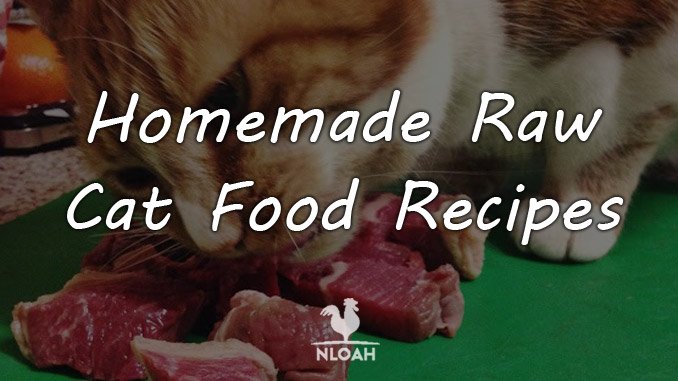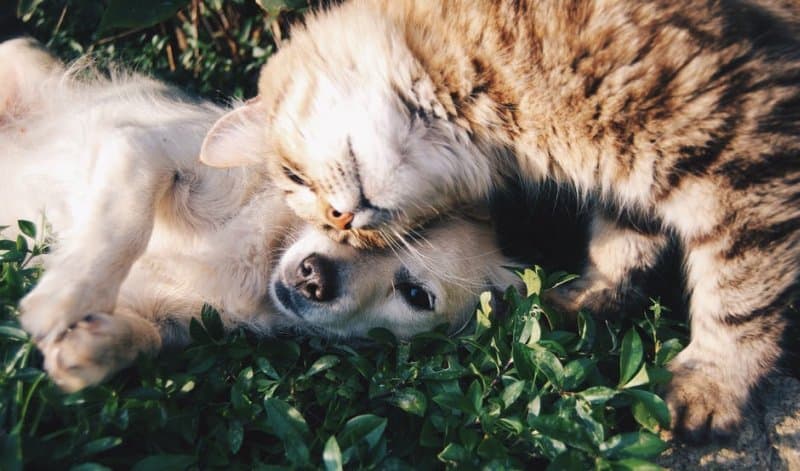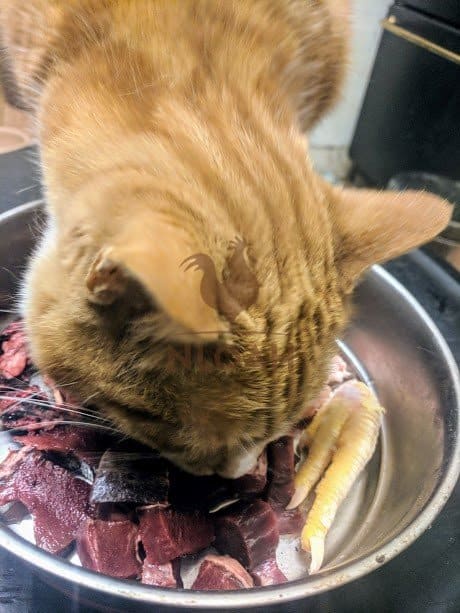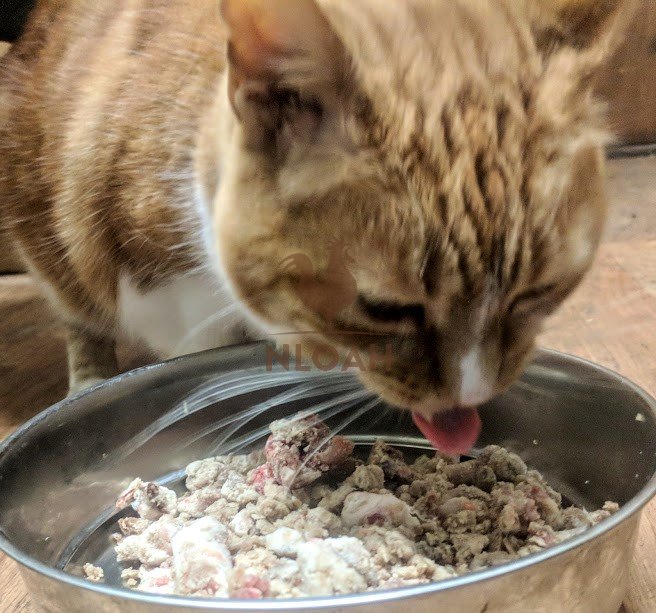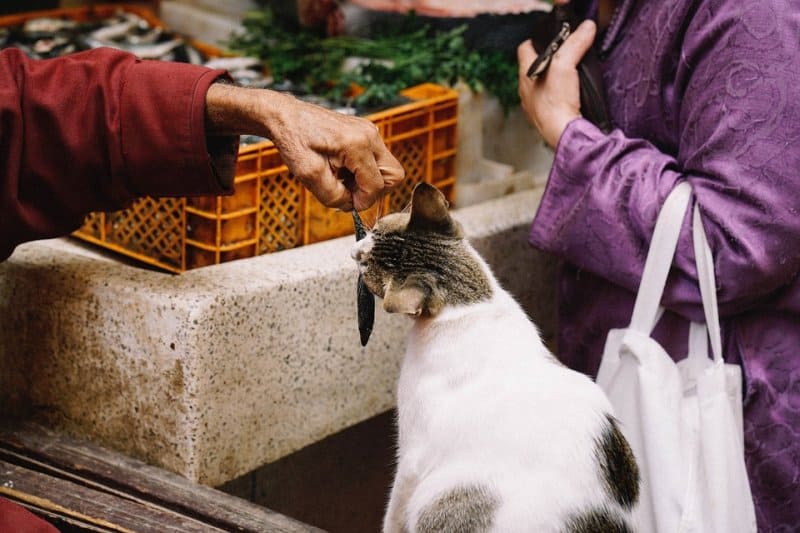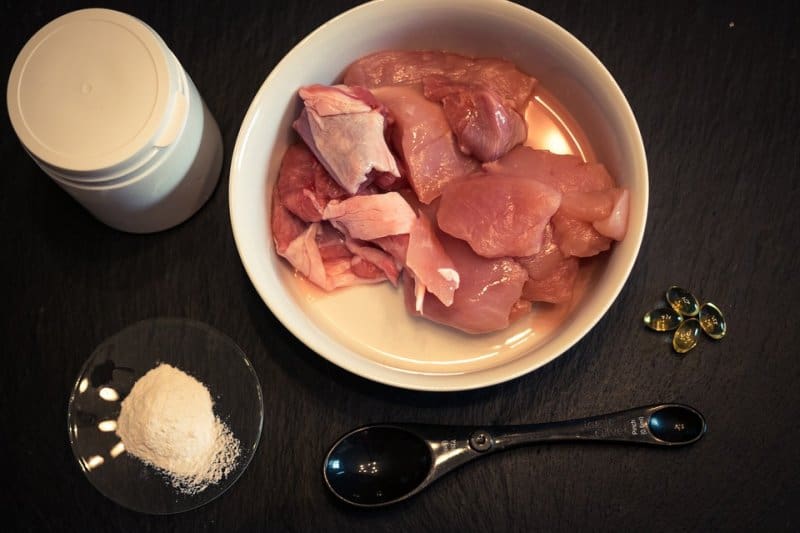Your cart is currently empty!
Monthly Homesteading Guides for the Beginner
Hey there! Well, I was not planning on doing a post like this, but here we are. I have actually read quite a few similar posts to this one, where you get a monthly look at what happens on the homestead, and I always find them really helpful. They’re kind of a simple overview on how the whole year looks without handling the hairy details; I think they help me out because I love lists! I especially love handwritten lists. I must remember things better when I write them down! The reason I did not want to share a list like this is because my entire plan for the spring of 2018 was to have a completely free garden start up course ready for my readers! It was going to be awesome… until I realized that I didn’t really have all of the photos I wanted for that. As a first year homesteader myself, I had not really planned to teach anyone else how to do it. I documented quite a bit about what we did within our tiny garden, with our chickens, etc this year… but I didn’t really get down to the detailed photos needed to teach someone else what exactly do. Oops!
With that in mind, this upcoming season (we may be on a tiny farm instead!!) I plan to take all of the photos and notes necessary to get that free online course underway. I am really excited about it! It’s going to be super fun, full of great advice and tips, and you can access it at any time without paying a single dime. Really fun! For now, while the 2017 growing season dwindles down and we all start to settle in for the winter, I wanted to put together a list of homesteading skills together here on the blog. It will walk you through the entire year, month to month, with certain ideas, skills, and to-dos that you would want to get done during that time of year. Of course, I live in Iowa, so if you live in a different part of the country or even the world, then this list might look a little different to you. If that is the case, a good rule of thumb is to always base dates and timelines off of your average annual first and last frost dates. To find those, you can click HERE.
Are you ready to get started on your homestead journey? I started our first large scale vegetable garden last spring, bought a small flock of chickens, and began a journey that has changed our family’s entire lives. We once lived an average American’s life: we ate food that came in boxed, plastic packages from the grocery store, had no idea what seasonal eating looked like, ate a lot of meat and cheese, knew nothing about the care and keeping of livestock animals, and did not know the incredible amount of hard work caring for your food can take. While the work is daunting and overwhelming at times, it is also the most rewarding work that you can ever do. Working for your meal, knowing where it comes from and what it has been fed or sprayed with, will change your life. I promise it will! The best part? Anyone can do this! You don’t have to have acres upon acres of land, a degree, or even a green thumb. All you need is a good notebook, a curious mind, and a body full of passion to get started.
This list of monthly tasks on the homestead is meant for beginners. If you are already a homesteader, then you might find this list a little boring, but you may also find something new within it as well! I am walking through this entire year as if you have never done any of the following tasks, like growing a garden or raising backyard chickens. I hope you enjoy!
January
- Grab your notebook and favorite pen and get to dreaming! Now is the time to start planning, researching, and budgeting your new dream. Homesteading is not cheap, so be sure to budget accordingly throughout the year. The initial costs will all come in the spring, when you begin planting and welcoming in livestock.
- Find some good books to help teach you! Some of my favorite include:
- A Kid’s Guide to Keeping Chickens by Melissa Caughey (perfect for a brand new chicken owner)
- The New American Herbal by Stephen Orr (all about the medicinal and culinary constituents of various herbs)
- Floret Farm’s Cut Flower Garden by Erin Benzakein (how to grow a cut flower garden)
- Duck Eggs Daily by Lisa Steele (how to raise backyard ducks for beginners)
- Taunton’s Complete Guide to Growing Vegetables + Herbs (if you know absolutely nothing about gardening, pick this up!)
- Depending on the weather where you live, start gathering supplies and begin building your structures. This could be a greenhouse or a chicken coop!
- Make your sowing, transplanting, and succession planting schedules. You may also want to begin planning any companion beds!
- Grow microgreens inside the house.
- Start a compost pile or a worm bin!
February
- Order your seeds! Some seed companies start as early as January, so if you are looking at companies that sell specialized/limited seeds, make sure you get them early. Also, don’t be afraid to grab older seeds. Most seed companies market that seeds expire after a year – if they are stored well (out of direct sunlight, high temps, and in an airtight package) then seeds can last 5-10 years! Try using a germination test to see if old seeds are still good.
- Start early seeds. This will need to be done either in the house or a greenhouse. Early seeds include onions, broccoli, cabbage, kale, collards, kohlrabi, parsley, lettuce, and celery.
- If you live in a place with snow, wait until it has melted and apply any soil amendments you may have like compost, mulch, or leftover fallen leaves from the past autumn.
- Begin grabbing chicken supplies like a heat lamp, brood box, feeders and waterers. Make sure the coop is being built now!
- Enjoy preserves from last year if you have them and begin to dream about what you’ll be growing in the upcoming warm weather!
March
- Start more seeds indoors! Now is the time is start warmer weather crops like tomatoes, peppers, eggplant, brassicas (broccoli, kale, cauliflower, brussels sprouts, cabbage, kohlrabi), lettuce, green onions, and cool season herbs. Look at your seed packets and match starting time to your zone!
- If the ground is workable, begin plotting your garden outdoors. Rent your sod cutter, rototiller, and begin cutting.
- Sow seeds outdoors if the ground is workable.
- Order your chicks and bring them home! Prepare their brood box and home for the first 7-8 weeks of life.
- Read more garden books to relieve cabin fever! This is the time to get all of the good research in.
- Purchase a garden journal a begin making notes.
- You may transplant seeds you started in February at the end of this month, but watch the weather! If there are still predicted frosts, use heavy weighted row covers or hoop tunnels.
- Prune any established berry bushes and fruit trees.
April
- Direct sow cool season crops like carrots, turnips, lettuce, arugula, radishes, green onions, spinach, beets, swiss chard, and Asian greens.
- Start to harden off any larger seedlings you have. This is done by placing the seedlings outdoors in a protected area everyday for a week or two. Transplant them to the ground (kale, chard, collards, broccoli, herbs, etc).
- Plant potatoes and onion starter sets.
- Start warm season seeds like tomatoes, peppers, basil, lavender, sage, thyme, summer + winter squash, melons, beans, and peas.
- Start flowers! Zinnias, cosmos, foxglove, nasturtium, sunflowers, and more.
- Let chicks roam around outside for 10-20 minutes a day around 3-4 weeks old if temperatures are in the 60s-70s. You don’t want them to get too cold!
- Forage for wild edibles like dandelions, nettles, and clover.
- Start adding new garden waste and chick manure to your compost pile! Don’t forget to turn it at least twice a week.
- Mulch around new transplants to retain moisture and suppress weeds. If you’d like to fertilize, now is the time and during active growth in the summer. We garden organically, so I only use compost tea or worm castings! Be gentle on new plantings and their roots.
May
- If you have not already, start warm season crops like summer + winter squash, melons, and herbs.
- Direct sow more lettuce so you have produce in June – you won’t be able to plant much later than this as the heat will make the lettuce bolt!
- Transplant any herb starts like lavender, lemon balm, sage, thyme, basil, parsley, etc. These are honestly easier to just purchase rather than start from seed yourself!
- Harden off other transplants.
- Transplant any remaining brassicas, squash, tomatoes, peppers, melons.
- Direct sow radishes for a midsummer harvest.
- Harvest early spring crops like lettuces, spinach, spring onions, Asian greens, radishes, chard, and kale.
- Time for the chickens to move! If your chicks/ducklings are between 7-8 weeks old, it’s time for them to transition outdoors to their coop.
- Begin making a watering schedule. Whether you are watering with a hose or a drip line, make sure you feed those roots! Water in the mornings if you can.
- Keep an eye out for pests! They start coming late in the month. We practice IPM (integrated pest management and plan to avoid pests rather than spray for them).
- Transplant or direct sow flowers as companion plants to help attract pollinators!
- Keep up with weeding. You can do it!
- Pinch off apple buds that appear in clusters of more than three. If you have blueberries, make sure to not let them over-fruit
- Direct sow any warm season crops like peas, beans, and corn.
- Add any leftover garden scraps to the compost pile or feed them to your chickens/ducks.
June
- Transplant any autumn vegetables that you started early like autumn brassicas (broccoli, cabbage, cauliflower, etc).
- Begin harvesting from the garden! Lettuces, herbs, radishes, spring onions, kale, chard, and summer squash. Most of these will not be ready until the end of June, especially if you planted in mid May.
- Harvest garlic scapes and bulbs if ready that were planted last fall.
- Place cages over tomatoes and peppers. Place lattice near pole beans, climbing cucumbers and other melons, and nasturtiums.
- Begin to mulch potatoes or build hills with soil to mound them and get a bigger harvest.
- Begin canning any spring vegetables.
- Start autumn/winter transplants in starter trays. You will want to get a head start on broccoli, cabbage, cauliflower, kale, kohlrabi NOW!
- Make sure you are taking note of any changes in the garden in your journal, like your watering schedule, rainfall, weeding, and pest control.
- Pests will start being terrible now through August. Make sure you are taking all precautions to keep them out of the garden!
- Make a schedule to let your backyard chickens/duck free range at some point throughout the day. If you live in a residential area, this is usually best done in the evenings before the flock goes to bed so they are easier to round up.
- Harvest and start drying herbs now. You will have so many! Pinch of flowers if you do not wish herbs to go to seed. They taste better if they do not flower!
- If you have any plants that continually give (kale, chard, peas, flowers) harvest every day or two. The more you pick, the more you get! Be careful to take only one third of the plant at the time.
July
- First flower blooms! Start harvesting your flowers at their peak times so they may open and bloom in your vase. Sunflowers should be blooming by now!
- Harvest your vegetables like broccoli, zucchini, kale, lettuce, and herbs like chamomile, lemon balm, rosemary, sage, thyme, parsley, and young basil.
- Begin collecting and drying herbs for medicinal uses in the home like salves, teas, tinctures, and compresses.
- Can or freeze peas, summer squash, and beans.
- Begin foraging for wild berries and harvesting your own berry bushes like raspberries, strawberries, and blueberries. Freeze or make some yummy preserves! Bake lots of pie.
- Summer vegetables like tomatoes, peppers, and eggplants will start growing flowers which will soon turn into fruit.
- Transplant the autumn brassicas you started last month. You may need to plant them under row covers to keep pests away.
- Mulch and pile potatoes. Harvest early potatoes if you like; these are just small young potatoes that you should eat the day you dig them up.
- Preserve your many harvests (there will be a lot!) by freezing or canning. You can freeze zucchini in grated or zoodle form for winter soups, stews, and casseroles. Gift vegetables to friends and neighbors!
- Things will start looking overgrown and messy by the end of the month. Don’t fret! Enjoy the bounty while it lasts, for it will soon be gone.
- Let chickens eat leftover garden scraps and/or compost them. Don’t forget to turn that pile!
- Plant any green manure crops in place of other harvested crops that take a lot from the soil like garlic, carrots, and other root vegetables.
- Continue to pull weeds and manage pests by hand picking. It’s going to start getting hairy!
- Watch out for hidden cucumbers!
- Start placing herbs like basil, fennel, dill, lavender, chamomile, lemon balm, mint, and catnip in the chickens’ nesting boxes to help encourage laying! Dry mixes work better than fresh, but either is fine.
August
- Time to transplant the last of the autumn/winter garden vegetables.
- Tomatoes will start showing up in abundance. Get ready for the storm! Can, dehydrate, lay in the sun, or freeze sauce/paste.
- If you are planning to want dried beans, stop watering the plants and allow the pods to dry. Harvest and store dried beans.
- Reduce watering on squash and other plants susceptible to powdery mildew.
- Continue to harvest herbs and store properly for use later. Store fresh herbs in water like you would fresh cut flowers, refrigerated.
- Begin to direct seed lettuces and other greens for autumn.
- Onion tops will start to turn yellow and fall over. Wait at least two weeks after this happens before harvesting. Make sure to allow onions to dry out and develop the papery skin before storing. Water onions often for larger bulbs (be careful of rot)!
- Cure garlic for winter storage in the sun; braid if you can.
- Harvest early winter squash and cure.
- Continue to harvest early potatoes if you wish. Storage potatoes will not be ready until later in the autumn.
- Watch out for pests on your nest transplants and sown seeds. They will go on the attack! Seriously consider investing in lightweight row covers. This will also help with sun exposure.
- Harvest eggplants.
- Watch out for signs of your first eggs! Chickens will begin to squat often, sit in the nesting boxes, and sing the egg laying song.
- Pickle cucumbers.
September
- Time to get down to harvesting! Gather the last of the tomatoes. They will be fleeting! Harvest winter squash (pumpkins, butternut, acorn, delicata, spaghetti, etc), peppers, eggplants, final summer squash, beans.
- Continue to harvest and store herbs.
- Cure all winter squash. You may have a few more on the vine and you may leave those until next month to harvest. You must cure them before eating next month!
- Continue to can and freeze. You’re almost done!
- Gather eggs daily. Clean the chicken coop at least every other week. You may want to start thinking about how you’ll prepare the coop for colder months. Begin stocking up on feed and treats. Consider trying the deep litter method for winter.
- Begin to harvest storage potatoes and cure them.
- Plant green manure crops to help replenish the soil for next spring.
- Let herbs and other plants go to flower if you can.
- Trying fermenting or making your own cheese.
- Begin collecting eggs as early as possible so they do not freeze.
October
- Begin harvesting cold weather crops that you planted in June + July like spinach, arugula, turnips, carrots, radishes, beets, broccoli, and other brassicas.
- Mulch any root crops that are still growing with straw.
- Plant garlic! Mulch and water until the first hard frost comes.
- Cover greens with a row cover if frost is approaching.
- Begin your deep litter method in the chicken coop. Remember that cold is coming and to let your chickens get outside as often as possible before snow arrives!
- Harvest the last of your flowers. Plant mums! Purchase spring blooming bulbs and plant for next year.
- Plant green manure crops before the first frost hits.
- Begin to “clean up” your garden. Compost any annuals. Leave perennials until spring (they make homes for overwintering insects). Spread compost, manure, and mulch over garden beds.
- Continue to manage your compost pile. If you did a good job, you can use that compost on your garden now!
November
- Phew! It’s over! If you’ve been working since spring, it’s about time to be done and rest. Continue to make notes in your garden journal and decide which improvements you may want to make for next year.
- If you want, you can continue to extend your gardening season with hoop tunnels and cold frames. Cover any greens still growing.
- First hard frost hits sometime here!
- Enjoy meals made with your autumn harvests, winter squash, greens, broccoli, kale, carrots, turnips, beets, arugula.
- Let your chickens mull about the garden and eat any leftover greens before the snow falls.
- Make Thanksgiving dinner with your fresh and preserved garden bounty and fresh eggs! If you eat meat, purchase a local turkey.
- Start making gifts for friends and family for Christmas. Try gifting homemade herbal recipes, teas, canned goods, dry soups, or saved seeds. Fresh eggs always make people happy!
December
- Try growing some micro greens! They keep you healthy during cold weather and crush your cravings for fresh greens.
- Continue collecting eggs on the daily so they don’t freeze outside. Either continue with the deep litter method or clean your coop regularly to prevent respiratory illnesses.
- Cut your Christmas tree! Make ornaments from foraged finds, birdseed, and dried fruits.
- Start crafting handmade holiday gifts.
- Play in the snow and relax by the fireside. Enjoy this time to rest!
- Eat the rest of your winter squash and preserves, or save some for spring!
- Dream of next years garden, but spend those months of cabin fever planning.
- Knit yourself a sweater!
- Check your chickens for illness and frostbite regularly.
Phew! That was a lot, but I think it’s just enough to get you started. I am excited to get into more homesteading tasks in the future like beekeeping, and perhaps keeping more livestock like pigs or geese/turkeys. Fermentation and cheesemaking is something that I hope to also approach in this upcoming year! There are so many amazing sustainable goals to test and try; I want to do it all! How about you? What are your goals for 2018 on the homestead? Let me know in the comments!
I hope this guide helps you out if you are a first time homesteader. You can find links to other experience-like blog posts from this past growing season. I am hoping to have more how-to guides in 2018 to help you out! (:
xoxo Kayla
























 I used to plant kale in straight rows all by its lonesome. I stripped it of its protective layer of ground cover when I weeded down to bare soil. I didn’t know to give it a support team of friends who all had a function to serve my kale. I didn’t know how much my annual plants would like to be nestled between established perennials, elders who hold the soil firm and strong around them while they establish their young roots. Plants like to be on contour so they can soak up all the water they desire. They need a system that is designed for them to survive and thrive… and not suffer or get sick. They need community and support too… just like we humans do.
I used to plant kale in straight rows all by its lonesome. I stripped it of its protective layer of ground cover when I weeded down to bare soil. I didn’t know to give it a support team of friends who all had a function to serve my kale. I didn’t know how much my annual plants would like to be nestled between established perennials, elders who hold the soil firm and strong around them while they establish their young roots. Plants like to be on contour so they can soak up all the water they desire. They need a system that is designed for them to survive and thrive… and not suffer or get sick. They need community and support too… just like we humans do. Yet, me being me, I also see humans’ amazing potential to come together and grow…companion planting style. I see how using permaculture techniques can make such big change in our lives and communities. It’s a design system that allows us to exist within nature and our communities in a very different way. I see how much our planet needs us to embrace those techniques, even if we were taught very differently. I see how much can be done in small, marginal, or neglected spaces by people that are excited to grow. I see farmers and foragers, like the two owners of my educational farm, that are willing to share knowledge without wrecking impassioned student’s already thin wallets.
Yet, me being me, I also see humans’ amazing potential to come together and grow…companion planting style. I see how using permaculture techniques can make such big change in our lives and communities. It’s a design system that allows us to exist within nature and our communities in a very different way. I see how much our planet needs us to embrace those techniques, even if we were taught very differently. I see how much can be done in small, marginal, or neglected spaces by people that are excited to grow. I see farmers and foragers, like the two owners of my educational farm, that are willing to share knowledge without wrecking impassioned student’s already thin wallets.



